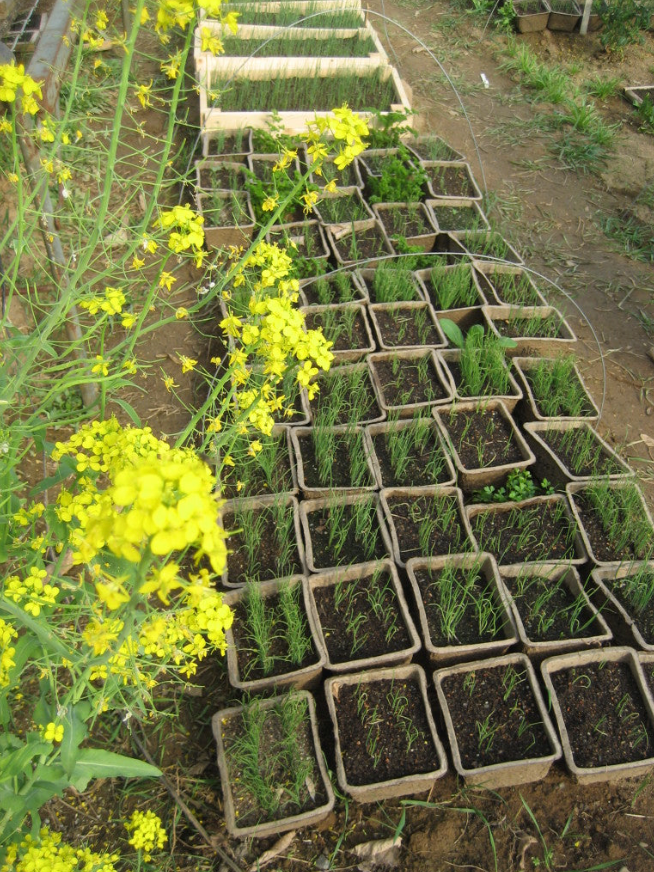I get more excited about starting alliums from seed than any other garden crop. They are a bright green beacon of spring that tells of winter's demise—which, by February, is the only story I want to hear.
Seeds for this plant family—which includes onions, scallions, leeks, chives, garlic chives, and many other lesser-known specimens—are among the earliest that can be started indoors. Onions and leeks transplant most successfully and yield the biggest bulbs and shanks when started from February 1st through March 10th in the Northeast (though I've had great harvests from mid-March sowings and acceptable harvests from late-March to early-April direct sowings). Scallions, chives, and garlic chives are more forgiving as to start time, and scallions in particular are best grown in succession with several sowings in spring and throughout the summer.
Here's How To Do It

Starting allium seeds is easy. Fill a flat or deep wide tray (the deeper the better) with compost-amended potting soil. Then make and firm down quarter- to half-inch furrows the length of the tray that are about 2" apart.
Sow the seeds heavily in these furrows, about 6 per inch. An alternate method for onions and scallions is to fill six-packs with amended potting soil, moisten, and then create a quarter-inch-deep dibble in the center of each cell.
Drop 6-8 onion seeds or 12-15 scallion seeds into each dibble and then cover them with potting mix. (The advantage of this latter method is that transplanting is a breeze—just thin the cells to 3-5 plants each and pull and transplant the whole plug.
Space them about 12" apart in the bed and they will happily grow to full size in an easy-to-weed-around clump.)
Germination Temperature

All alliums germinate best at room temperature. Though they pop a little faster with heat, the germ rate actually goes down a bit; so as long as you start them early enough you should have time to wait the 7-10 days they take to emerge at room temperature.
They like to be kept wetter than most seedlings, growing most robust when their feet are almost constantly wet. Rather heartbreakingly, such damp conditions also cause the main problem that onion seedlings face: damping off. Onions are more prone to damping off and other fungal diseases than nearly any other seedling.
The ideal indoor setup for onions is to grow them at room temperature in nice moist soil with frequent air movement. A miniature fan is a great tool for this. As with any seedlings, be sure to provide plenty of light.
Transplanting Advice

The traditional advice for alliums is to allow them to grow until they are pencil-thick before transplanting them. However, even with an early- to mid-February start date it is hard to achieve this by transplant time, which is about 6 weeks before the last frost (early- to mid-April here in upstate New York).
I think that shooting for seedlings that are between one-eighth and one-quarter of an inch in diameter is a more realistic goal. These size seedlings are easy to achieve, transplant great, and start growing within a day or two of transplanting. They produce big onions, thick leeks, and fast scallions. The thin, spindly seedlings are not worthless—they will usually catch. But they often waste days or weeks looking practically lifeless before resuming growth. Tip: for really thick seedlings, start your seeds in a tray that is very deep, say 6-8". Some growers use a window box for this purpose.
Soil Matters!

The hardest thing about starting alliums from seed is finding what you need to make good potting mix in the frigid depths of winter. Many garden centers are closed. Your own compost pile is probably frozen up. Luckily, we have some great soil and compost options.
Alliums are hungry crops that demand fertile soil for best results, and the mixes sold in small bags for houseplants and the like tend to have too little nutrition.





